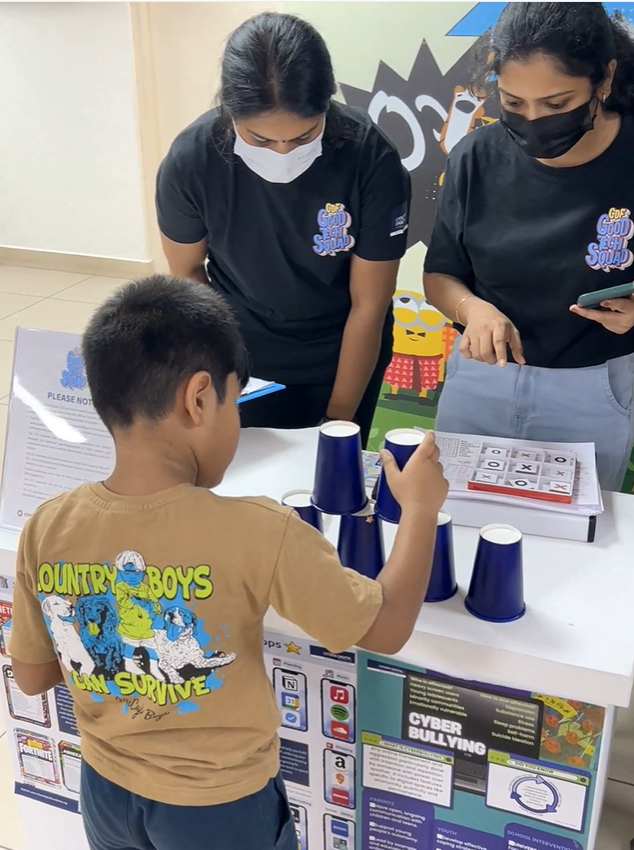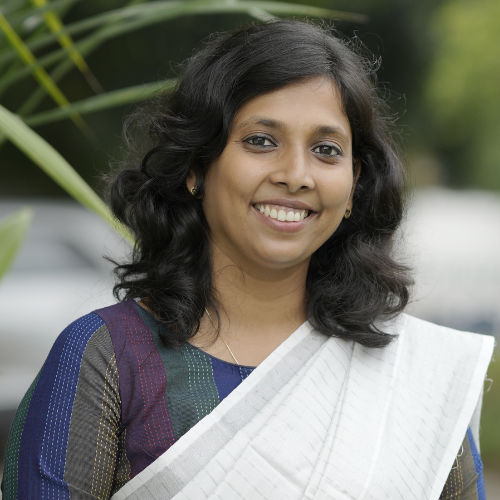Faster than fairies, faster than witches,
Bridges and houses, hedges and ditches;
And charging along like troops in a battle,
All through the meadows, the horses and cattle:
All of the sights of the hill and the plain
Fly as thick as driving rain;
And ever again, in the wink of an eye,
Painted stations whistle by.
– Robert Louis Stevenson, From a railway carriage
Ever since I read this poem, I longed through my adolescence to travel by train to experience the beauty of the flickering landscape. My first train journey – a two-hour trip – took me across the largest lake in Kerala, passing by paddy fields. I was amused to see some houses thatched with coconut leaves, and cows mooing and hens pecking in their premises. Over time, books and multiple mobile applications, including chats and OTT platforms, have invaded my attention and stolen these sights, just like many other passengers.
Last month, during an eight-hour train travel, I saw two girls aged about 4 and 5 travelling with their families. One of them was playing and giggling with her mother and grandfather, while the other girl and her parents were seated detached, scrolling and consuming content on three different phones. I could see the second girl curiously admiring the other family as they talked and laughed playfully. She turned to her parents for some attention. I couldn’t help but notice the parents offer another cartoon video to the child as they continued to be consumed by their own screens. Here, I saw a family giving away what could have been some ‘quality time’ with their child, to content creators and corporates. Two thoughts came to my mind – first, do children crave for mobile phones as much as they long for attention and playtime? Second, what is it that keeps adults tethered to their mobile phones – habit, convenience, or FOMO?
Almost everyone acknowledges growing screen addiction among children and increasing mobile phone dependency among adults. Often, people end up blaming themselves or their children for pottering about on their phones. Rapid mushrooming of mobile phone de-addiction centres is now alarming. Digital De-addiction Centre (D-DAD), an initiative of the Kerala Police, has counselled and rehabilitated 232 children in the last 18 months alone. Nomophobia is creeping in across generations.
I have been closely involved in a three-month study conducted by Citizen Digital Foundation as part of the Good Tech Campaign at the paediatric OP of a hospital to learn about screen usage patterns among children. The study, carried out among 1600 parents in Feb 2025, revealed that 93% of the children were smartphone users and three in four of these children were given smartphone access before they turned five. A parallel survey was also conducted in the same setting among paediatricians, child psychologists, psychiatrists, and other health specialists to understand the effect of excess screen time on children. Doctors attributed speech delay, virtual autism, isolation, social withdrawal, echolalia, hyperactivity, sexual aggression, and obesity as symptoms of sedentary screen time. Hence, when a sign of compulsive behaviour associated with smartphone usage is exhibited by the young, it should be given due attention.
While watching small doses of content from CoComelon, LooLoo Kids, or ChuChu nursery might get children familiar with the alphabet, rhymes, good habits or language, exposing 2-5 year-olds to screens for over an hour could potentially be hypnotic and lead to sensory overload. Another popular genre loved by kids is pretend-play shows like Vlad & Niki or Diana & Roma, marketed as educational content. In my search for a healthy entertainment option for my daughter, I noticed that much of this content revolves around the display of an extravagant collection of toys and parents being readily available on-call for playtime – creating unrealistic expectations. More concerningly, these shows often reinforce materialistic ideas, gender stereotypes and patriarchal notions. For instance, boys don’t cook or are naturally messy, or girls can’t fix a broken machine without a boy’s help. Girls are expected to have perfectly tidy, pink-themed rooms and host tea parties, and be obsessed with shopping, while boys with cars, machines, extreme sports and machismo, explaining the long-term embedding of stereotypes in the minds of a growing generation.

While children are drawn to smartphones mostly by the nature of the content, teens and adults continue to be entrapped by a platter of mindless entertainment, social validation forums, trends, sharenting culture, and more that extractive algorithms serve up non-stop. According to the annual entertainment report published by EY, Indians collectively spent a whopping 1.1 trillion hours on smartphones in 2024, mostly on social media, gaming, and videos, making India the third country to spend maximum time online, giving a goldmine of business to Big Tech.
With the rapid advent of digital technology, smartphones have permeated deeply into the daily lives of people. To lead a healthy and quality life, it is essential for both children and adults to strike a balance between time spent offscreen and onscreen. This is easier said than done. It is imperative to organise nation-wide campaigns to build public resilience against attention-harvesting techniques of digital platforms, and sensitise them about the importance of engaging critically and mindfully with digital technologies. While the blame is passed on from parents to children and from doctors back to parents, intentionally extractive tech design continues to quietly manipulate through user interfaces. Without giving our brains a window to process the tabs we navigate, data being shared, or the time lost. Globally, some countries are already restricting social media usage by children.
To truly put children’s well-being first, policymakers must engage with parents and educators through open public consultations. As a parent, I think authorities must ramp up efforts to regulate inappropriate content that children are exposed to on content streaming platforms in India. A set of guidelines have been issued under The European Union’s Digital Services Act (DSA) to reinforce data privacy protections for children and young adults in the digital environment. Under the Act, Very Large Online Platforms (VLOPs) and search engines, such as Meta and Google, are mandated to establish robust safeguards and ensure strict compliance with regulatory obligations. Following this, the DSA banned targeted advertising to minors on online platforms in Europe. This also led to platforms like Snapchat, Google’s YouTube, and Meta’s Instagram and Facebook withdrawing targeted ads to underage users. TikTok, Instagram and YouTube now also set the accounts of users under 16 years old to private by default. The European Union is also advancing user-friendly, privacy-preserving age verification methods, allowing users to prove they are over 18 without disclosing additional personal information.
With the Digital Personal Data Protection Act (DPDPA), India is now calling for strict protections for children, and it is timely to include more specific interventions. For instance, a two-minute pause after 30-minutes of viewing or other design friction elements for children to wean-off the constant scrolling, could be introduced on all platforms. While India deals with its own complexities of culture, wealth gaps, digital access and literacy, making online child safety and well-being the underbed of policies should help mitigate a lot of the ongoing harms in India.
It is well understood that the opposite of addiction is not sobriety, but community. Providing children with alternative healthy activities, quality family time, and creative outlets for their holistic growth and development are sure-shot ways of limiting screen-attachment. As part of the Good Tech Campaign mentioned earlier, a small kiosk was set up in the hospital to engage children with games and activities that organically lured them away from screens. We directly observed how introducing alternative creative activities engage kids more productively than the constant mindless scrolling they otherwise resort to.

To shift the gear back to play-based childhood from phone-based childhood, governments, schools and parents should proactively facilitate initiatives that encourage physical play among children. Governments and public communities should consider setting up child-friendly parks or play areas within a 5-km-radius of housing communities to encourage healthy social interaction among children. Play points could be included in children’s school report cards. This would encourage more families to take their kids out for playtime. To nurture a generation of citizens with civic sense, emotional intelligence, and empathy, it’s time we discover a new norm of living, learning and socialising autonomously, instead of being led by Pied Pipers.
Shana Shihab

Shana Shihab is Programme Manager at CDF and heads projects and campaigns that promote responsible and inclusive technology.

